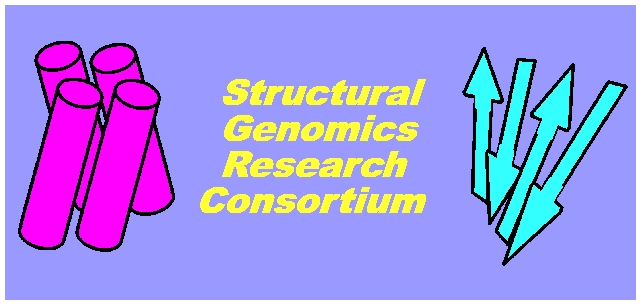
Proteins from yeast are chosen to represent evolutionarily diverse
families whose members are not predicted to correspond to a known protein
structure (based on Sali
Lab Yeast Protein Models ). The initial protein families were selected
from clusters generated on the basis of sequence similarity by SYSTERS,
PRODOM,
and DOMO. Coding
sequences obtained by PCR from genomic DNA are cloned, expressed, purified
and crystallized for structure determination. Information about the proteins
is provided and progress toward determination of the structures is summarized
in the data tables. Proteins
P013-P016 were chosen to test whether the structure prediction tools did
in fact discover structural similarity between proteins that align with
only 14-22% identity in amino-acid sequence.
The primary objective is to put in place the technology
needed to increase knowledge of the diversity of protein folds in nature.
This basic information is needed to develop computational tools for predicting
protein structures from gene sequences and for predicting protein function
from structure. These tools will ultimately be applied to understand
the functions and interactions of the 100,000 or so proteins of the human
proteome.
Collaborators:
| Brookhaven National Laboratory |
Bill Studier, Joel
Sussman, S. Swaminathan, Otto
Ritter
Dawei Lin, Jiansheng
Jiang, S. Eswaramoorthy
Bob Sweet, Malcolm
Capel, Hal Lewis, John
Flanagan
Sue Ellen Gerchman, Helen
Kycia, Vito Graziano, Nancy
Manning |
| The
Rockefeller University |
Stephen Burley, Andrej Sali, Terry Gaasterland
Jeff Bonanno,
Roberto Sanchez, Natalia Rodionova |
| Albert Einstein College of
Medicine |
Mark Chance, Steve
Almo |
Support:
This Pilot Project is part of the Joint Genome Institute (JGI)
Functional Genomics Program, supported by the Office of Biological and
Environmental Research (OBER) of the U.S. Department of Energy.
Last updated September 12, 1999
DOE/BNL
Privacy & Security Notice
